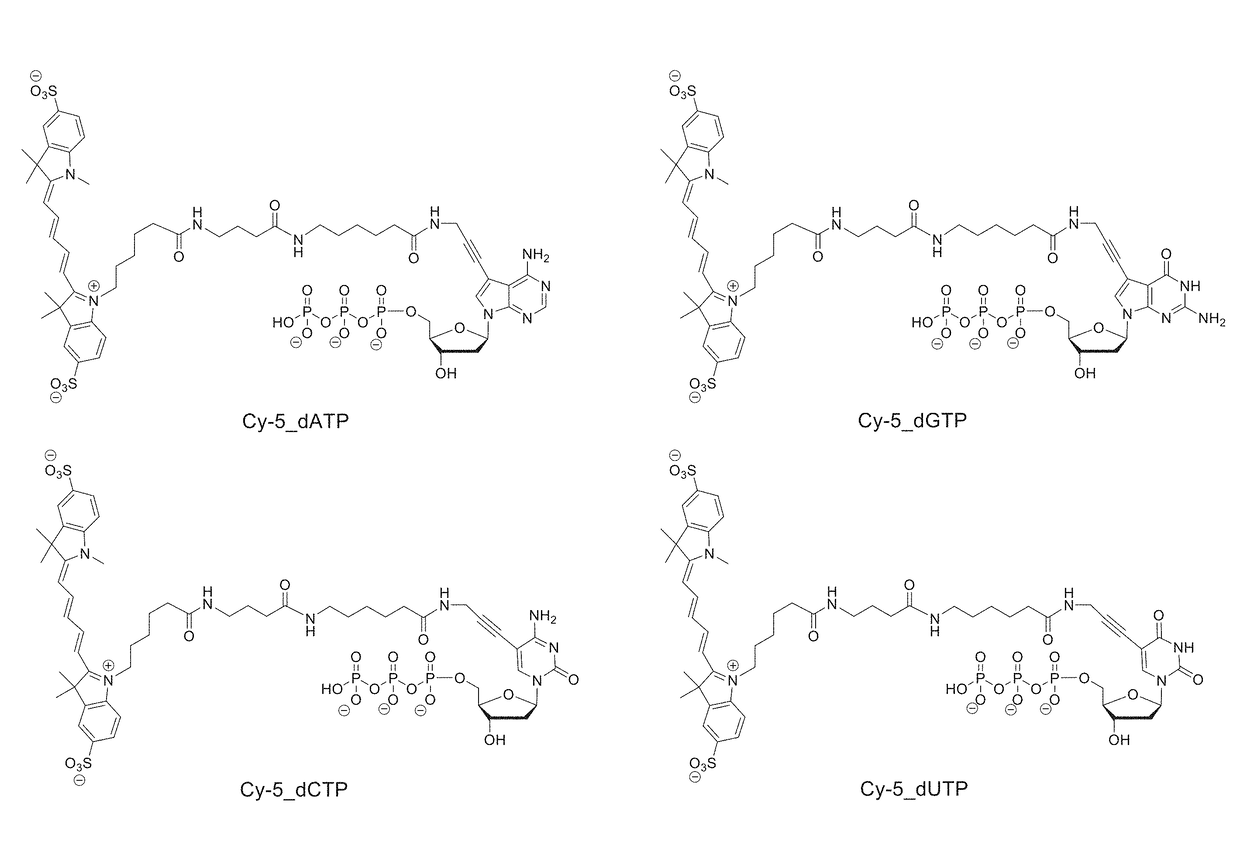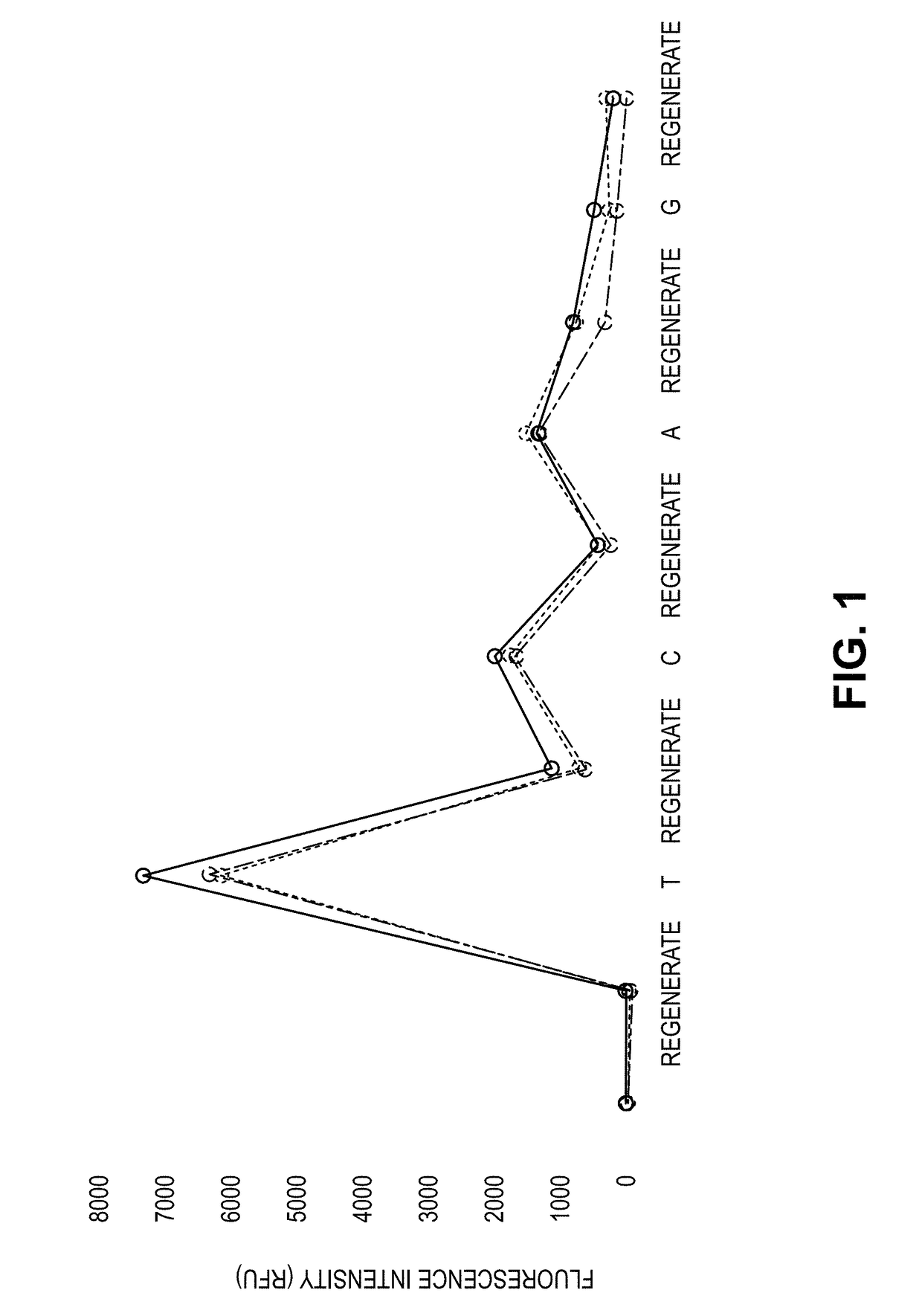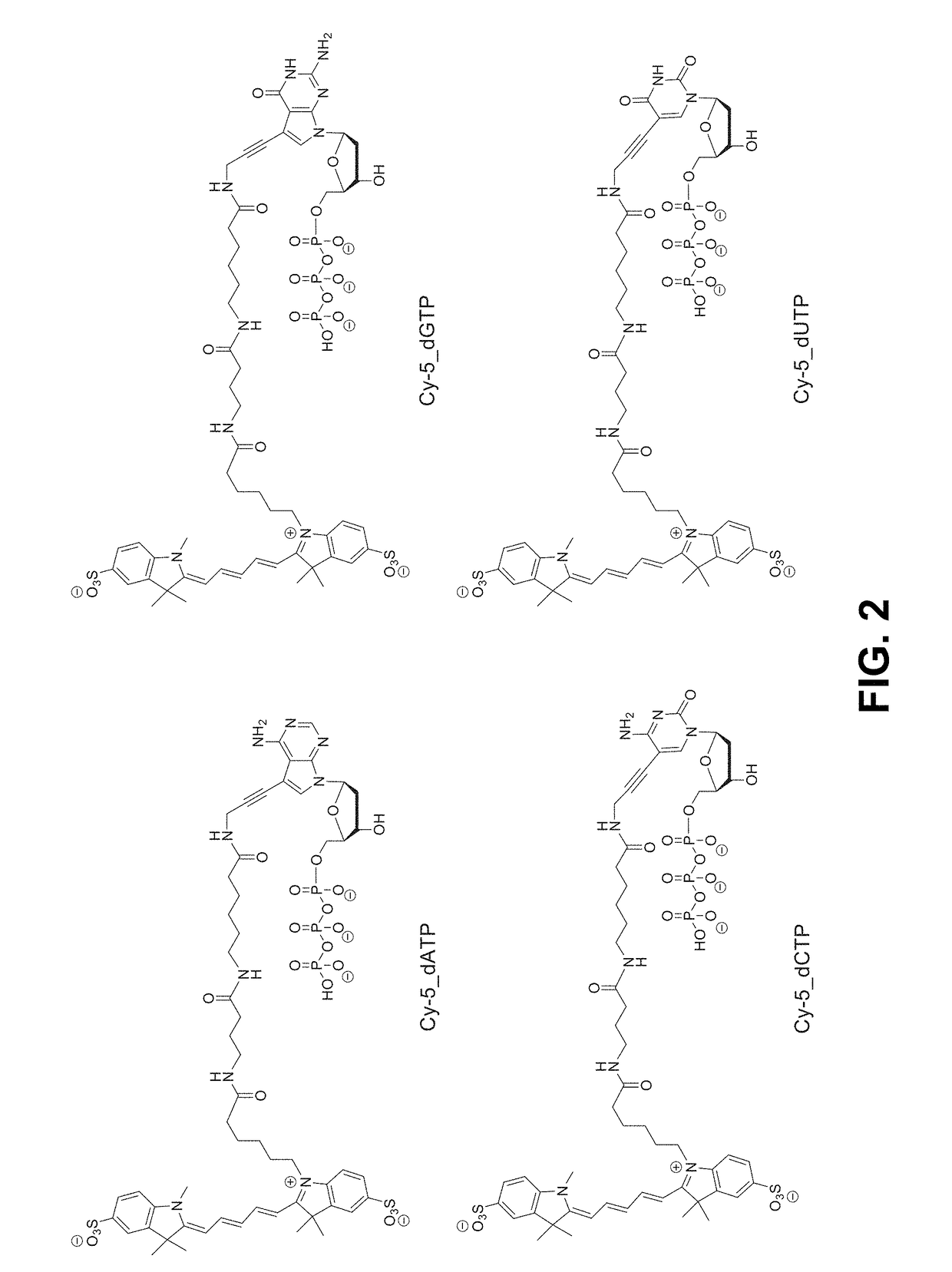Process for cognate nucleotide detection in a nucleic acid sequencing workflow
a cognate nucleotide and nucleic acid technology, applied in the biotechnology field, can solve the problems of slow sequencing workflow, introducing the opportunity for undesired phasing and base calling errors, and causing the register loss of correct nucleotide identification
- Summary
- Abstract
- Description
- Claims
- Application Information
AI Technical Summary
Benefits of technology
Problems solved by technology
Method used
Image
Examples
example 1
Incorporation of a Reversible Terminator Nucleotide and Detection of Labeled Nucleotide Associating with a Blocked Primed Template Nucleic Acid Molecule in the Same Reaction Mixture
[0348]Synthetic template and 5′-biotinylated primer strands were synthesized according to standard procedures, and hybridized to create a primed template nucleic acid molecule having a 3′-end available for polymerization. The next three template-specific bases to be incorporated into the primer strand (i.e., positions N+1, N+2, and N+3) were ATC. Streptavidin-coated magnetic beads were functionalized with 1 mM NHS-PEG4-TCO in phosphate buffered saline (PBS) that had been made 10% DMSO at room temperature for 45 minutes. Processed beads were then decorated with the biotinylated primed template nucleic acid molecule. The beads were next flowed over an aminosilane flow cell surface that had been functionalized with tetrazine. The reaction mixture was incubated for one hour to covalently attach the decorated ...
example 2
Method of Identifying Cognate Nucleotide in a Stabilized Ternary Complex Formed in the Presence of a Catalytic Metal Ion
[0355]A flow cell containing nucleic acid features was prepared according to standard methods. Streptavidin-coated microbeads were contacted with a solution that included primed template nucleic acid, where the template strand was biotinylated at its 5′-end. Beads having immobilized primed template nucleic acid subsequently were affixed to the interior surface of a flow cell by standard chemistry that will be familiar to those having an ordinary level of skill in the art. Two different populations of beads were used in the procedure to demonstrate multiplex processing. The next correct nucleotide to be incorporated for the first bead type (“Bead 1”) was dTTP (or dUTP), and the next correct nucleotide to be incorporated for the second bead type (“Bead 2”) was dGTP. Reference images were taken in the 647 nm channel to enable background fluorescence subtraction from s...
example 3
Imaging Wash Reduces Background Signal and Stabilizes Ternary Complexes: Labeled Nucleotide Platform
[0364]Flow cells containing immobilized microbeads harboring single-stranded template nucleic acids hybridized to sequencing primers were obtained by conventional laboratory procedures familiar to those having an ordinary level of skill in the art. Four populations of beads were included in the procedure, with each bead type harboring a different primed template nucleic acid. The flow cell was first equilibrated with a pre-incorporation solution that included AMPSO buffer (about pH 9.0), 50 mM KCl, 10 mM (NH4)2SO4, 0.1% Triton X-100 (trademark of Dow Chemical Company) nonionic detergent, and 0.1% hydroxylamine to maintain integrity of reversible terminator nucleotides used in a subsequent step. Next, the flow cell was equilibrated with a solution that included four reversible terminator nucleotides, and that consisted of the pre-incorporation solution supplemented with 10 U / ml Thermin...
PUM
| Property | Measurement | Unit |
|---|---|---|
| period of time | aaaaa | aaaaa |
| period of time | aaaaa | aaaaa |
| volumes | aaaaa | aaaaa |
Abstract
Description
Claims
Application Information
 Login to View More
Login to View More - R&D
- Intellectual Property
- Life Sciences
- Materials
- Tech Scout
- Unparalleled Data Quality
- Higher Quality Content
- 60% Fewer Hallucinations
Browse by: Latest US Patents, China's latest patents, Technical Efficacy Thesaurus, Application Domain, Technology Topic, Popular Technical Reports.
© 2025 PatSnap. All rights reserved.Legal|Privacy policy|Modern Slavery Act Transparency Statement|Sitemap|About US| Contact US: help@patsnap.com



